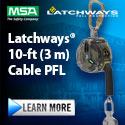
| www.agc.org • July 2016 |
Contact Us Archives
Subscribe Printer-Friendly AdvertiseSafety and HealthFacebook |
Private Exchanges Lead to Both a "Buy-Down" and a "Buy-Up" Effect BY ROB HARKINS, PRACTICE LEADER, PRIVATE EXCHANGES - HUMAN
CAPITAL PLACEMENT; AND
JONATHAN TREVISAN, CHIEF BROKING OFFICER - MID MARKET PLACEMENT;
WILLIS TOWERS WATSON
One interesting result of the advent of private exchange technology combined with a defined contribution is that when individuals are given a) money to spend on benefit purchases and b) a shopping experience that they can navigate, they behave like consumers. In this environment, they typically purchase less medical coverage (sometimes called the "buy-down" effect), leaving money available to purchase other benefit options (the "buy-up" of voluntary benefits). In effect, their benefit choices change, reflecting a true consumer-minded benefit model. What’s prompting this surprising turn?
Currently, many employers choose medical plans that they believe will accommodate the needs of the greatest number of members. In so doing, they often select a benefit plan that meets the needs of those members who utilize the plan more than most. Additionally, the traditional benefits culture has fostered an environment where more insurance is better, even if a cost benefit analysis indicates otherwise. The end result is that many individuals are over-insured. However, this concept is becoming increasingly challenged, supplanted by the idea that one can be adequately insured at a lower (in fact, correct) level of benefits.
A private exchange is the ideal solution to help people navigate choices, evaluate options and "right-size" their benefits. When people are provided money to spend on benefits and multiple plan options exist – in conjunction with a robust decision-support tool that helps them evaluate choices – they behave differently. By becoming more educated benefits consumers, people behave more efficiently and buy only those plans that they need.
Private exchange decision support tools provide individuals with a recommendation that is customized to their personal needs. Armed with a recommendation that presents personalized financial and benefit options, many people have the confidence to make decisions that best suit their needs. In most cases, they purchase a lower cost medical plan than what their employer previously offered in the traditional one-size-fits-all approach.
As a result of this change in buying habits and the "buy-down" effect realized for the reasons previously identified, the Willis Private Exchange experience has demonstrated savings of almost $700 per employee per year.
Coupled with the "buy-down" of medical insurance, there appears to be an increase in the number and volume of voluntary benefits purchased by employees in a private exchange. Employees are buying a greater number of voluntary benefits to supplement the traditional lines of insurance that have historically been offered; they’re also buying more voluntary benefits when given additional options.
A private exchange is the ideal solution to help people navigate choices, evaluate options and "right-size" their benefits. Based on an analysis of the Willis book of business available, it appears that voluntary benefit purchasing more than doubled when employees purchased in a private exchange. This behavior could be attributed to employees taking a more consumer-minded approach when presented with an increased number of medical benefit plans and decision support technology that shows them in real dollars and cents how much each benefit selection costs.
When employees act as rational consumers, they buy what is most important to them. And as purchasing habits reveal, employees have determined that voluntary benefits are an important component of their comprehensive employee benefits package.
Private exchanges offer more choice, with an increased number of plan options to choose from and a greater suite of voluntary products to buy. Expanded choice is important because there are now four generations in the workforce. In addition, many baby boomers are working past age 65. Therefore, buyer’s needs are becoming more varied and voluntary benefits are increasingly used to meet the varied needs of a more diverse and sophisticated workforce.
Most significantly, as medical plan deductibles and out-of-pocket levels continue to increase, the use of voluntary benefits – which can help offset the employee’s deductibles and coinsurance responsibility – can be a cost-effective way to protect against the financial impact of a costly medical incident.
Private exchanges, by their very design, help consumers realize the importance that voluntary plans can play in getting a comprehensive benefits program that is best suited to their needs. And that’s a good thing.
With rising medical costs trends remaining unchecked, the inherent structure of a private exchange can actually assist in optimizing consumer behavior in such a way that appropriate medical coverages are purchased (the "buy-down" effect), accompanied by complementary, lower cost, voluntary benefits (the "buy-up" effect). This model can actually assist in mitigating the financial risk for the individual, while lowering the overall cost to the employer. This is a win-win scenario that truly ushers in the next stage of consumerism.
This article was reprinted with permission from The Institute for HealthCare Consumerism (IHC). |
|||
 2300 Wilson Boulevard, Suite 300 · Arlington, VA 22201 · 703-548-3118 (phone) · 703-548-3119 (fax) · www.agc.org
2300 Wilson Boulevard, Suite 300 · Arlington, VA 22201 · 703-548-3118 (phone) · 703-548-3119 (fax) · www.agc.org
About AGC | Advocacy | Industry Topics | Programs and Events | Career Development | News & Media
© Copyright 2025 The Associated General Contractors of America. All rights reserved.

